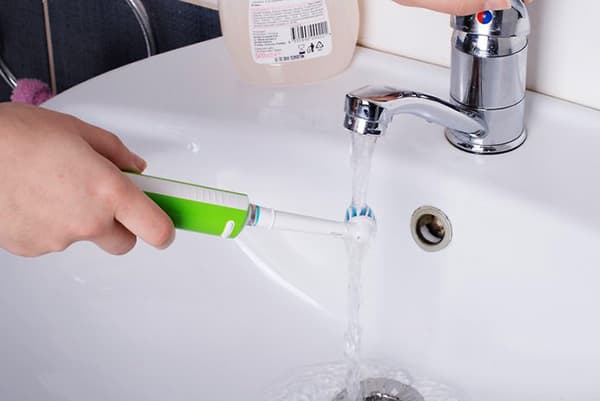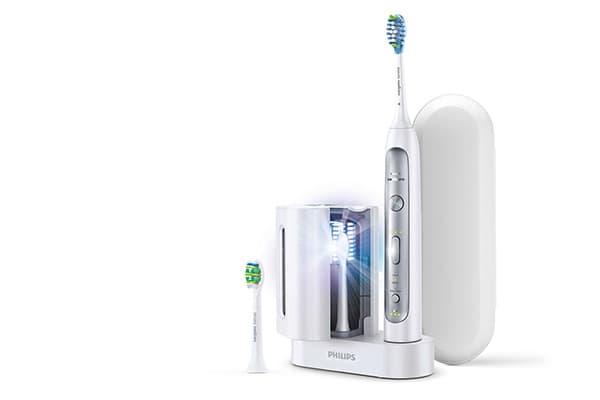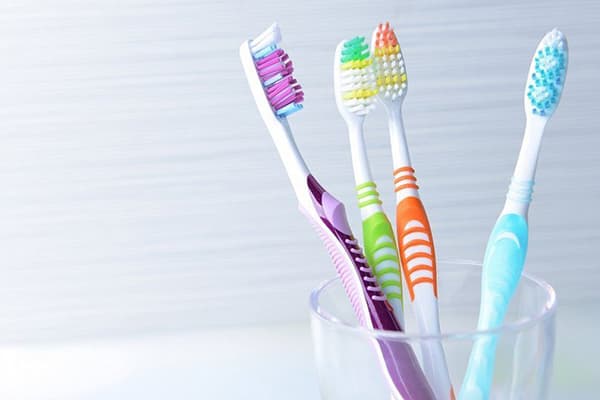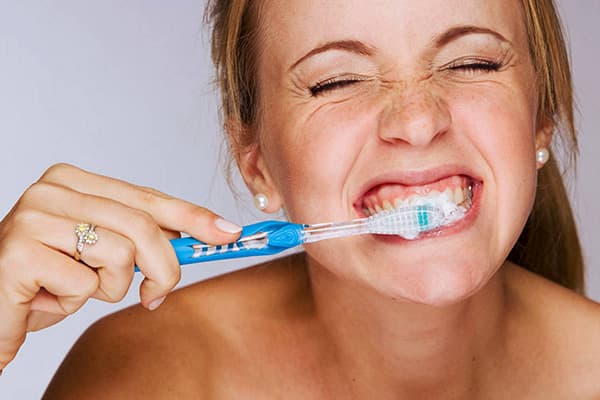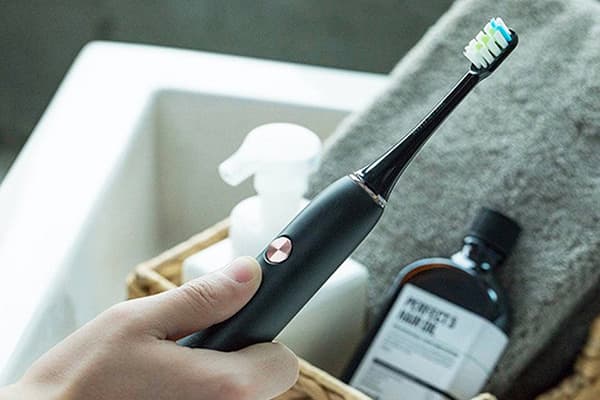How to care for a toothbrush?
Dentists around the world insist that you need to not only regularly conduct oral hygiene, but also to properly brush your toothbrush. Together with the plaque, many microbes settle on it. The most dangerous of them are staphylococcus and E. coli. If the tool is infected, using it becomes unsafe. This can lead to the development of diseases. Proper brush care, disinfection and timely replacement will help to avoid many problems.
How to wash the brush?
Perhaps it is worth starting with the first use of a new brush. Often you can hear advice before the first use, to pour over the head with bristles with boiling water. However, the brush just unpacked is sterile and contains no bacteria. Rather, this method helps soften the synthetic hairs a bit so that they do not scratch the gums.
But with each further use, a number of simple rules should be observed:
- Before you take a brush, you must not forget to wash your hands with soap and water.
- The toothbrush is washed with warm water before brushing.
- After cleaning, the bristles are washed more thoroughly. You need to rub it with your finger under a stream of warm water to free from toothpaste and plaque.
- If desired, the brush can be washed with soap if it still seems dirty. But in general, there is no such need.
- After washing, shake off the remaining water and let the brush dry in an upright position.
Disinfection
Every 2 weeks, the toothbrush must be disinfected in an antibacterial solution. This will reduce the number of germs. Also, the procedure should definitely be resorted to after a cold, a professional brushing. Although the opinions of dentists in this case differ. Some believe that disinfection is enough, others are advised to purchase a new hygiene item, and throw out the old one.
How can a toothbrush be sanitized?
- In an antibacterial mouth rinse. Pour rinse aid into a small cup and place the brush head down. It is important that the bristles are completely coated with an antibacterial solution. After 10-15 minutes, the hygiene item must be removed, rinsed with water and dried. Examples of suitable rinsing agents: Asepta, Lacalut active, President Pro, Glister from Amway.
- In chlorhexidine. This is an inexpensive tool, costing up to 30 rubles per bottle. It is part of many antibacterial mouthwashes. To disinfect brushes, chlorhexidine is poured into the cap and dipped in bristles for 5–7 minutes. It is not necessary to wash off the disinfecting preparation, but to dry the brush - yes.
- In vinegar. Undiluted 9% table vinegar perfectly kills harmful germs and eliminates bad odor. You need to pour about a third of a cup of vinegar, leave the brush in it for 30 minutes, and then rinse it with running water.
- Disinfection with alcohol. Medical ethanol will help to quickly disinfect your toothbrush. It is enough to saturate the bristles with it or dip a head into it and leave for 1 minute. After you can immediately start brushing your teeth.
In addition to antibacterial solutions, special tools are used to process brushes. They are called ultraviolet sterilizers or disinfectants for toothbrushes; they cost about 1000-1500 rubles. The basis of the work is disinfection with ultraviolet rays. The device works from a stationary network of 220 volts. It is equipped with a system of fasteners for installation on the wall, as well as various clamps.Having a disinfector, it is much easier to take care of toothbrushes. It is also suitable for disinfecting razors.
Storage rules
Microbes simply adore dark, moist, cool places, which the bathroom belongs to. Under such conditions, they remain viable for a long time and multiply. For example, on a poorly washed wet brush. Store it properly as follows:
- Use a special vertical cup with a separate hole for each toothbrush. It is important to avoid cross contamination from other surfaces, including brushes from other family members.
- Take care of ventilation. The washed bristles should dry completely. Do not put the brush directly into the container. By and large, it is intended only for transportation or storage on the road.
- With a combined bathroom, choose a place to store away from the toilet. When flushing, harmful particles enter the air and then settle on nearby surfaces within a radius of 1.8 m. If you cannot move the brush to such a distance, you should get a protective cap with ventilation holes.
- Keep the brush storage container clean. Wash the cup or holder with soap and hot water at least once a week. To remove plaque, use baking soda and a sponge that was not used to clean the sink and other surfaces.
Proper use is important.
Following personal hygiene rules will not only preserve dental health, but also minimize the risk of bacteria colonizing the toothbrush. To serve faithfully, it is necessary:
- Use only a separate, personal brush. Each person’s oral cavity is teeming with billions of bacteria. Moreover, everyone has their own microflora, which is in harmonious coexistence with the body. If someone else’s microflora gets into the mouth of another person, the result can be unpredictable. To protect themselves from illnesses, all family members, including the husband and wife, must have personal brushes.
- Brush your teeth regularly in the morning and evening for 5-6 minutes. Timely cleaning allows you to suppress the reproduction of microbes in the oral cavity. Accordingly, there are less of them on the brush.
- Correctly choose the stiffness of the bristles and toothpaste. The fewer bacteria in your mouth, the cleaner the bristles. The correct selection of pastes and brushes ensures complete cleansing of the teeth from plaque, in which pathogenic microorganisms live.
- After each meal, use dental floss and mouthwash. Brushing your teeth 3-4 times a day is almost impossible physically, and traumatic for tooth enamel. However, to prevent food residues from decaying between the teeth, they must be removed and rinsed with a rinse aid.
- Every 3 months, change the toothbrush. Numerous studies have confirmed that pathogens from the oral cavity colonize the brush in 90 days. Even high-quality disinfection no longer destroys them. In addition, during this period, with regular use, the bristles wear out, and it can no longer clean its teeth qualitatively.
- Get a new brush after an infectious disease, professional brushing. In the body, antibodies fight infection. But pathogens survive well on the toothbrush, so it is recommended to change it after an illness. As for professional rehabilitation, it destroys 99.9% of harmful microorganisms in the mouth. To keep the cleaning result as long as possible, it is better to throw away the old hygiene item with bacteria or give it a second life as a device for cleaning hard-to-reach surfaces.
Brush care
In general, you need to take care of the electric brush in the same way as for an ordinary one. Processing rules are not too different. A pocket with batteries and a microchip is reliably protected from moisture, so the device can be washed without any fear.
However, there are several important nuances that need to be considered when caring for the electric brush:
- The bristle nozzle wears out after 3 months and must be replaced.
- Discharged batteries should never remain in the device. They can start to flow. Then, not only the brush will be damaged, but also the acid can get into the mouth and cause poisoning.
- After use, the electric brush must be washed with warm water and dried.
In attempts to disinfect the device, it is important not to overdo it. Boiling can cause the product to melt. According to GOST, the indicator is 1000 CFU / cm3 microorganisms on the bristles is the norm and in the absence of diseases of the immune system can not lead to infection.
Billions of bacteria get into the toothbrush daily from the oral cavity. Among them are streptococci, staphylococci, E. coli, porphyromonas gingivalis, herpes viruses and hepatitis A, B, C, candida albicans, coliform and many others. Improper care can lead to frequent illnesses. It is important to thoroughly wash and dry the bristles, choose a suitable place to store brushes, and observe personal hygiene rules. Every 3 months the device must be replaced.
